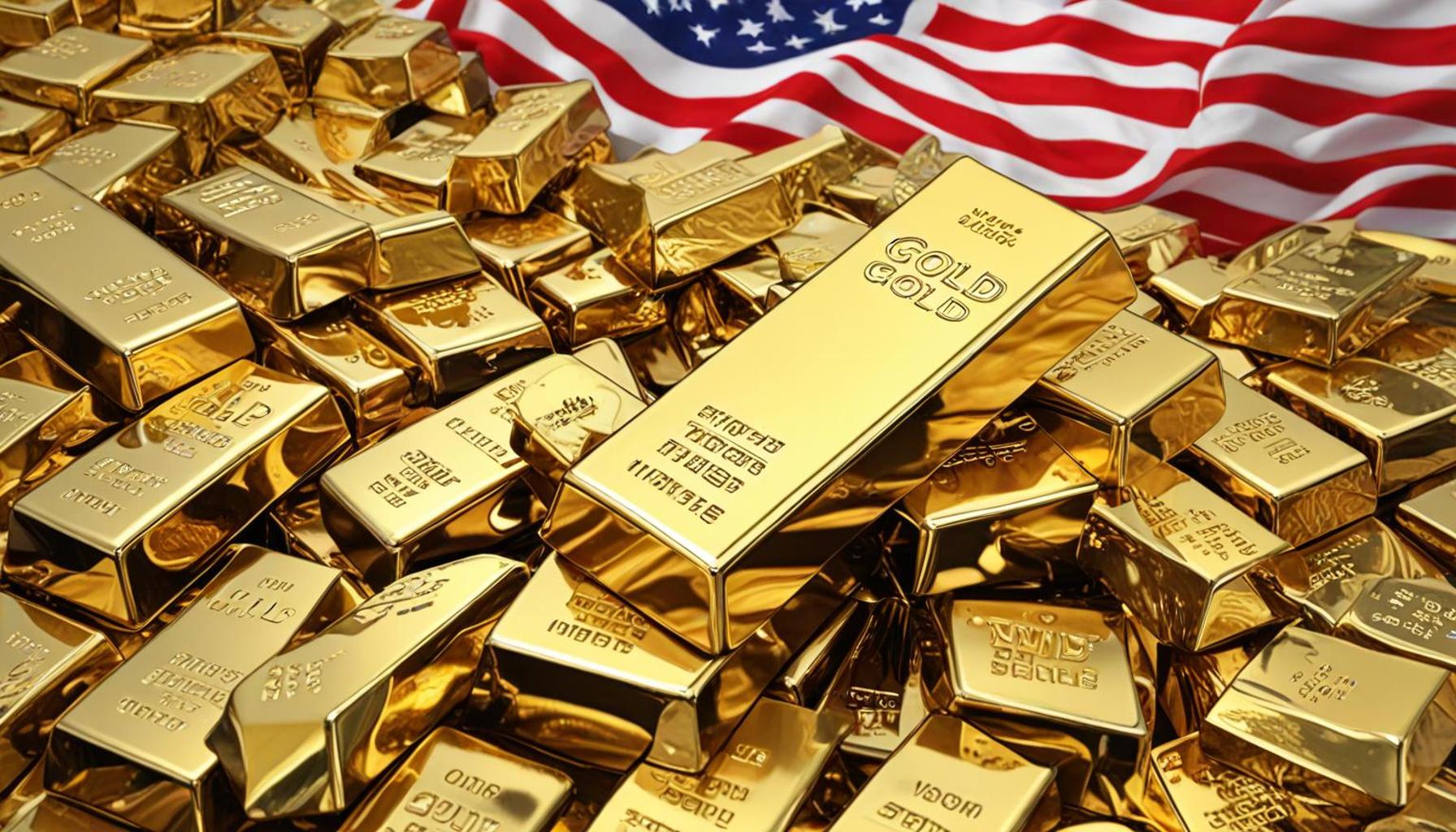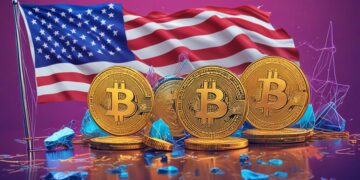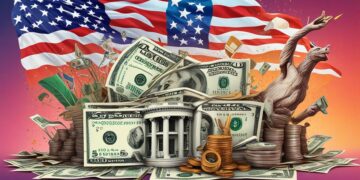Investing in Gold and Precious Metals in the USA: Is It Worth It?

Understanding the Appeal of Precious Metals
In an environment where economic volatility is a growing concern, investors are searching for reliable assets that can preserve wealth. Gold and precious metals have emerged as a promising option, appreciated not only for their historical significance but also for their tangible benefits in modern investment strategies. These assets have long been valued as a form of currency and a store of value, and their unique characteristics make them appealing in uncertain times.
Reasons to Invest in Precious Metals
One compelling reason to consider an investment in precious metals is their role as an inflation hedge. Throughout history, inflation has eroded the purchasing power of fiat currencies, but gold often retains its value, serving as a protective measure against rising prices. For instance, during the inflation crisis of the 1970s in the United States, gold prices surged significantly, demonstrating its effectiveness as a shield against currency devaluation.
Another vital aspect is Diversification. By incorporating gold into an investment portfolio, investors can balance risk more effectively. Gold often behaves differently compared to traditional stocks and bonds, making it a strategic asset. For example, when the stock market experiences downturns, gold prices tend to increase or remain stable, allowing investors to mitigate losses. Research has shown that portfolios with a modest allocation to gold have historically produced better risk-adjusted returns.
Moreover, Portfolio Stability during economic downturns can be crucial. Assets like gold have demonstrated an ability to retain or even increase their value during financial crises, providing a safe harbor for investors. In recent years, we’ve seen how events such as geopolitical tensions and global pandemics can lead to market instabilities, reinforcing the idea that precious metals can act as a stabilizing force.
Exploring Investment Options
Investors venturing into the world of precious metals have various avenues to explore. Physical Gold includes tangible assets such as coins and bars, giving investors the comfort of holding their investment in hand. This can be particularly appealing to those who value the physicality of their assets and are concerned about digital or paper investments.
Alternatively, Exchange-Traded Funds (ETFs) offer a more liquid and less hands-on approach by tracking the price of gold. This method eliminates the need for storage and security concerns inherent with physical gold while providing exposure to price movements. Additionally, Mining Stocks present another investment avenue, allowing individuals to invest in companies that extract precious metals. These stocks can offer leverage to gold prices but may also carry specific operational risks related to the mining industry.
The Path Forward
In conclusion, while the potential benefits of investing in gold and precious metals are clear, it is essential to weigh the inherent risks involved. Market volatility, changing regulations, and fluctuations in demand are all factors to consider. As the financial landscape evolves, understanding the characteristics of these precious assets will empower investors to make informed decisions. As we delve deeper into this sector, further exploration of the practicalities and strategies of investing in gold and precious metals will illuminate whether this avenue aligns with your financial goals.
CHECK OUT: Click here to explore more
Evaluating the Benefits of Precious Metals Investment
As the landscape of investing continues to shift, the allure of gold and precious metals remains a beacon for both seasoned investors and novices alike. The unique benefits these investments offer spring from their intrinsic value and historical relevance, prompting many to wonder if now is the right time to dive into this market. With uncertainty surrounding economic recovery and inflation expectations, exploring the advantages of these metals could illuminate whether they fit into your investment strategy.
Benefits of Holding Precious Metals
Investors are drawn to precious metals for several reasons, each catering to different aspects of financial security and growth potential. Here are some of the most compelling advantages:
- Gold’s Historical Value: Gold has been revered for centuries, often called the “go-to” asset during times of economic distress. Its historical performance serves as a strong testament to its reliability; for instance, during the 2008 financial crisis, gold prices soared as investors fled to safety.
- Liquidity: Precious metals tend to be highly liquid assets. Investors can easily buy and sell them, often accessing a ready marketplace even in times of turmoil, facilitating quick decision-making and response to market conditions.
- Global Demand: The allure of gold and silver transcends borders. Investing in these precious metals exposes U.S. investors to a global marketplace where increased demand—whether for jewelry, industrial use, or financial reserves—can drive prices upward.
- Tax Benefits: In the U.S., certain forms of precious metals, such as coins, can be held in Individual Retirement Accounts (IRAs), providing potential tax advantages. When investing through a self-directed IRA, investors may benefit from tax-deferred growth.
Understanding Market Conditions
However, while the benefits are enticing, it is crucial to consider prevailing market conditions. Precious metals are often subject to price volatility, influenced by a mix of geopolitical factors, currency fluctuations, and changes in central bank policies. For instance, the Federal Reserve’s stance on interest rates can directly impact gold prices, as higher rates typically press gold lower, making it essential for investors to stay conscious of economic indicators.
Furthermore, investing in precious metals is not merely about the metals themselves. The broader investment landscape is constantly evolving, with technologies such as blockchain and the rise of cryptocurrency complicating traditional notions of value. While precious metals may remain a solid investment, understanding how they compare to new asset classes is critical.
Investment Strategies
As you contemplate investing in gold and precious metals, consider the following strategies:
- Physical Ownership: Consider purchasing coins, bars, or jewelry. Keep in mind that this option includes costs for storage and insurance.
- Precious Metals Funds: Invest in mutual funds or ETFs that focus on metals, allowing for a diversified approach without the need for physical storage.
- Mining Stocks: Investing in companies involved in metal extraction can provide exposure to gold and silver prices without investing directly in the metals themselves, though this comes with its own set of risks.
In summary, the decision to invest in gold and precious metals is not just about wealth preservation—it’s about strategically positioning your portfolio against market fluctuations. Careful consideration of global trends, personal investment goals, and risk tolerance will significantly influence whether precious metals shine brightly in your financial future.
CHECK OUT: Click here to explore more
Risks and Considerations in Precious Metals Investing
While investing in gold and precious metals offers enticing benefits, it is essential to understand the inherent risks and challenges involved. A balanced perspective is crucial for anyone considering entering this sector. Several factors can impact your investment, and being aware of them can prepare you for potential hurdles ahead.
Price Volatility and Market Fluctuations
One of the most significant risks investors face lies in the price volatility of precious metals. Gold and silver prices can fluctuate dramatically in relatively short periods due to various elements such as inflation rates, currency strength, and geopolitical tensions. For example, gold saw a dramatic increase during the COVID-19 pandemic, peaking at over $2,000 an ounce in August 2020, but it has also faced sharp corrections since then. Understanding the historical price oscillations and trends is critical to navigating these ups and downs.
Furthermore, external factors—including interest rate changes, changes in government policy, or sudden economic shocks—can accelerate price changes. Investors need to keep a pulse on the global economic landscape to anticipate potential downturns or booms in the precious metals market.
Storage and Security Costs
When investing in physical precious metals, one cannot overlook the costs associated with storage and security. While owning physical gold or silver can provide a sense of security, it also comes with obligations to safely store your investment. Options include secure vaults, home safes, or bank deposit boxes, all of which incur additional expenses. Potential investors must factor these ongoing costs into their overall investment strategy to accurately assess profitability.
Market Competition and Alternatives
Another vital consideration is the market competition presented by other asset classes. As new investment opportunities arise—such as cryptocurrencies and digital assets—the traditional appeal of precious metals may be challenged. Investors often weigh the potential of emerging markets against their more established counterparts. Although gold and silver can serve as safe-haven assets during market turmoil, diversification becomes increasingly important to address shifts in investment sentiment. This evolving financial landscape prompts investors to research and assess how precious metals align with other investment strategies.
Long-Term Outlook and Economic Cycles
Long-term investors must also consider how precious metals react to rising global debt, currency changes, and economic cycles. For example, during periods of economic expansion, equities may outperform precious metals. However, in times of recession, these metals can serve as a hedge against inflation or currency devaluation. Understanding this cyclic behavior is vital for anyone holding a precious metals position.
Alternative Investment Vehicles
A viable way to mitigate risks while investing in precious metals is to consider alternative investment vehicles. For instance, options and futures trading can provide leverage in the precious metals market, allowing investors to gain exposure without the need to commit large sums to physical assets. Additionally, investing in precious metal ETFs offers a more liquid investment option that can easily be bought or sold on major exchanges. These funds can track the prices of gold and silver while providing diversification, thus appealing to a broader spectrum of investors.
In this multifaceted investment environment, moving forward with due diligence and comprehensive research will empower investors to make informed decisions regarding whether gold and precious metals align with their financial goals.
SEE ALSO: Click here to read another article
Conclusion: Navigating the Precious Metals Investment Landscape
As we traverse the intricate landscape of investing in gold and precious metals, it’s evident that this asset class presents a compelling case for many investors. The allure of gold’s stability and the historical significance it carries as a hedge against economic uncertainties cannot be overlooked. However, one must remain acutely aware of the volatility risks, storage costs, and emerging market competition that could impact long-term profitability.
Investors should thoroughly consider how precious metals fit into their overall financial strategy, especially in a rapidly evolving economic environment. With the rise of alternative investment vehicles like ETFs and digital currencies, as well as the ongoing fluctuations in global markets, diversification has never been more critical. By maintaining an informed perspective on current economic factors and historical trends, you can better position yourself to seize opportunities within the sector.
Finally, whether you lean toward physical assets, trading options, or exploring ETFs, the decision to invest in gold and precious metals should align with your financial goals and risk tolerance. For the discerning and diligent investor, the potential rewards can indeed justify the inherent risks, making it worth exploring precious metals as a strategic aspect of your investment portfolio. As we look ahead, continuous research and adaptability will remain vital in navigating this dynamic market successfully.

Beatriz Johnson is a seasoned financial analyst and writer with a passion for simplifying the complexities of economics and finance. With over a decade of experience in the industry, she specializes in topics like personal finance, investment strategies, and global economic trends. Through her work on World Information, Beatriz empowers readers to make informed financial decisions and stay ahead in the ever-changing economic landscape.





